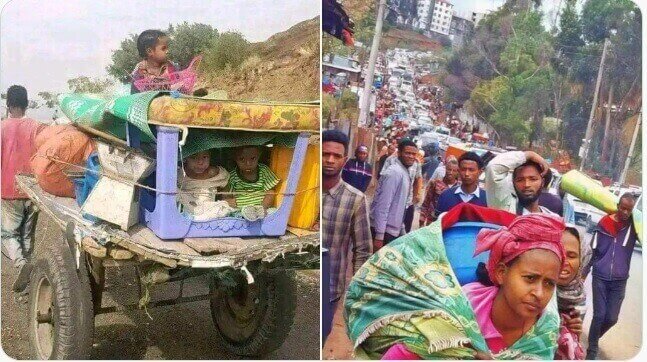 Addis Ababa – Over 4.38 million people were internally displaced in more than 3,300 assessed and accessible sites across 11 regions in Ethiopia, with Tigray included for the first time since September 2021, according to data collected by the International Organization for Migration (IOM), through its Displacement Tracking Matrix (DTM) methodology, between November 2022 and June 2023.
Addis Ababa – Over 4.38 million people were internally displaced in more than 3,300 assessed and accessible sites across 11 regions in Ethiopia, with Tigray included for the first time since September 2021, according to data collected by the International Organization for Migration (IOM), through its Displacement Tracking Matrix (DTM) methodology, between November 2022 and June 2023.
IOM Ethiopia’s National Displacement Report 16 reveals that the main causes of displacement were conflict (66%), drought (18%) and social tension (7%).
Somali region hosts the highest number of Internally Displaced Persons (IDP) primarily displaced due to drought, while Tigray region hosts the highest number of IDPs primarily displaced due to conflict.
A Village Assessment Survey (VAS) was also carried out during the same period to track returns. The VAS shows that an estimated 3.24 million returning IDPs were identified in over 2,700 villages across 10 regions. The highest returning IDP caseloads nationwide were in the regions of Amhara (44%), Tigray (39%) and Afar (6%).
The data is only indicative of the displacement and return in areas accessible to IOM enumerators and which fall under the tools’ methodology of assessing locations with at least 20 households with IDPs or returning IDPs (who have returned since 1 January 2021). Many locations remain out of reach to partners due to insecurity, road inaccessibility and social tension.
 Since 2016, IOM has been monitoring the humanitarian and displacement situation through area-based assessments, which capture the numbers of displaced persons and returnees, their locations and needs, to inform the wider humanitarian and development response.
Since 2016, IOM has been monitoring the humanitarian and displacement situation through area-based assessments, which capture the numbers of displaced persons and returnees, their locations and needs, to inform the wider humanitarian and development response.
IOM will continue to expand its assessment coverage across the country so that the needs of more IDPs can be assessed. Since 2018, DTM has been the official source for displacement data in Ethiopia and works with the Ethiopia Disaster Risk Management Commission.
IOM Ethiopia’s National Displacement Report 16 (November 2022 to June 2023) can be found here.
IOM DTM Site Assessment and Village Assessment Survey activities are funded by USAID, the Government of Japan, the US Department of State’s Bureau of Population, Refugees, and Migration (PRM), and the Government of Germany.
For more information, please contact: Kaye Viray, Media and Communications Coordinator, kkviray@iom.int
